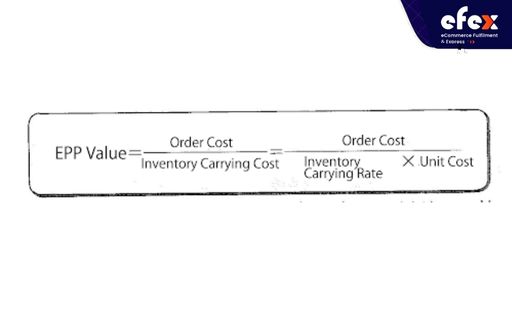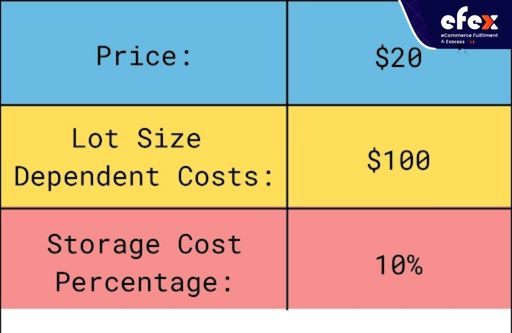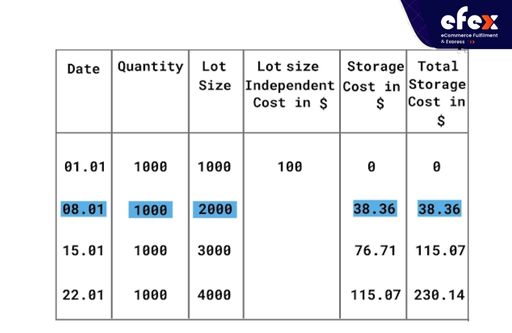
More Helpful Content
Part period balancing is a heuristic for optimizing lot-sizing. The PPB algorithm weighs the advantages of manufacturing in bigger numbers (reduced unit costs as well as faster cycle times) against the higher inventory carrying expenses involved with creating and maintaining more inventory.
In this article, we will explain how the part period balancing heuristic works as well as how to use it in your company's production strategic planning.

Any business must keep an effective production schedule in place. Small inventory discrepancies, however, might lead to late deadlines and unhappy customers. In order to maintain a record of their materials and goods, many businesses now seek help from enterprise resource planning (or ERP) software.
PPB, or part period balancing, is a lot-size method that modifies an original calculation with the lowest overall cost by taking into account extra periods.
👉 Read More: What Is Configure To Order? Example And Benefits
👉 Read More: What is Lot-for-lot? Example and Formula

Material Resource Planning (or MRP) is a critical component of any ERP system. MRP oversees the manufacturing programs for both finished and unfinished goods. Furthermore, MRP monitors inventory and makes it easier to determine the precise amount of material required at a given time.
The computation for available or projected stock requirements is compared to the principal requirements during this process. The MRP system starts make-or-buy choices by producing a procurement offer as existing inventory falls below the needed quantity. It also adjusts the order based on the shifting date and quantity.
In the event of a material shortage, it must promptly adapt to the new material purchase requirement. MRP serves as a link between demand and manufacturing planning, selecting the appropriate lot size for production scheduling.
The machine batch size, consumer order, and manufacturing all affect the lot size. The Part Period Balancing heuristic approach aids in determining the ideal ratio of items for every manufacturing stage so that production can be done effectively while keeping inventory levels to a minimum.
👉 Read More: What Is Least Unit Cost And Example?
The number that is ordered during manufacturing is based on the lot size. The size of the machine batch, customer order, production size, and shipment size determine the lot sizes, which might be either fixed or dynamic. Multiple heuristic approaches are integrated into ERP systems to choose the lot size for your production unit. A Part Period Balancing heuristic approach is one of them.
The total ordering expenses and inventory holding cost for a particular element are reduced as much as possible using the Part Period Balancing (PPB) technique of lot-sizing. Using this technique, lots are created whose total is lower than the lot size-independent expense by adding up the subsequent requirements for a product starting from the shortage time.
Part Period Balancing selects a lot size that matches the storage cost requirement to the lot size. We can use this method to guarantee that the holding cost is equivalent to or lower than the ordering cost.
PPB is a lot of sizing techniques used, like EOQ, to apply the lowest cost related to order cost as well as inventory carrying cost. While EOQ is appropriate for items with consistent demand, lot sizing is equally beneficial for those whose demand is variable because it involves varying the order size and the period number of sizing.
A fundamental unit of PP (Part-Period) is utilized in this procedure. One PP represents the value of one part kept for a period, and one PP represents the sum of all of the PP values computed for each period. When the holding costs of accumulated inventory exceed the order cost, the amount of scheduling order is determined.
👉 Read More: What is the Planned Order Release? Formula and Example
To simplify these computations, a common figure for lot sizing known as EPP (standing for Economic Part-Period) is employed. This number, which indicates that the accumulated PP exceeds the order cost, is derived using the following formula:

We'll use a $20 item as an instance, $100 in lost size-independent charges, and a 10% storage cost percent.

We have the formulae of storage cost as follow: Storage cost =Price Requirement Storage cost percentage Time in Storage365

Cost of Storage Calculations: (20 x 1000 x 0.1 x 7 (in days)) / 365 = 38.36 is the cost of storage. Orders must be placed by August 8 for 2000 pcs of lot size, as the overall cost of storage exceeds the price of $100 regardless of lot size. Although this instance just shows the fundamental computations, the ERP system uses part period balance algorithms to figure out the precise lot-size holding period.
👉 Read More: Order Management System: Definition, Process And Value
👉 Read More: Order Management System For Ecommerce: Definition, Key Effect, Benefit
Choosing the lot size is a critical step throughout the MRP process. In this post, we looked at one of the most used lots sizing heuristic strategies, "Part Period Balancing." This is a heuristic strategy for balancing your production capacity. It is critical because it helps to eliminate inventory shortages as well as overages, as these are costly for organizations of all sizes. PPB considers both the limited lifecycle of products and their lead times. The essential point is that making effective decisions about balancing manufacturing capacity using the Part-Period Balancing Heuristics Methodology involves numerous aspects.


